
This dessert seems to condense the sweetness and surprises of life together, with its irresistible texture and unique aroma. Caramel pudding is captivating with its mesmerizing appearance. The golden caramel covers the soft pudding, glistening like golden autumn leaves. Under the sunlight, the caramel pudding exudes an enticing shine, as if telling the story of its rich experience. The texture of caramel pudding is equally stunning. The top layer of caramel is crispy, while the bottom layer of pudding is smooth and delicious. Each bite allows you to experience the perfect fusion of caramel and pudding, a delightful combination of chewiness and smoothness that will enchant your taste buds. As the caramel pudding slowly melts in your mouth, the sweet sensation is indescribable. Life is filled with many beautiful moments, and caramel pudding perfectly embodies these moments. While enjoying this dessert, we can feel the sweetness and beauty of life. Let’s savor this charming caramel pudding together!
Ingredients for Caramel Pudding:
| Egg | 150g |
| Milk | 500g |
| Sugar | 100g |
| Shredded coconut | 10g |
| Vanilla extract | 5g |
Step:
1.First, we need eggs, which are essential ingredients in many baking recipes. Eggs provide binding and leavening properties in the baking process, making desserts light, fluffy, and smooth. In addition to eggs, we will also use milk. Milk gives desserts a creamy texture and adds richness to the mouthfeel. It also helps balance the flavors of other ingredients, creating a more well-rounded taste experience. Granulated sugar is an important sweetener that regulates sweetness and enhances the texture of desserts. It can intensify the natural sweetness of ingredients and make desserts more tempting. Sugar also helps the batter expand during baking, resulting in a lighter dessert. Next is desiccated coconut, which is finely shredded coconut meat with a rich coconut flavor. The unique texture of desiccated coconut adds a special touch to desserts. It is often used as a topping, sprinkled on the surface or as a filling, adding extra layers to the overall presentation. Lastly, we need some vanilla extract. Vanilla extract is a concentrated liquid extracted from vanilla beans, imparting rich aroma and distinct flavor to desserts. It adds charm to desserts, making each bite filled with enticing fragrance.
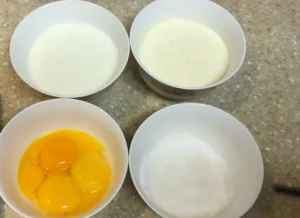
2.Start by adding an appropriate amount of granulated sugar to a flat-bottomed pan and heat it over medium-low heat. Gentle heat helps the sugar gradually melt. As the sugar starts to melt, it will gradually turn into a golden caramel color. This process requires patience to ensure even dissolution of the sugar. While the sugar is melting, gently swirl the pan to help distribute the liquid evenly. This motion helps the sugar heat evenly at the bottom of the pan and prevents it from clumping together. Along with careful observation, the sugar syrup will gradually transform into a deep brown caramel color. Pay close attention to the heat at this stage, as overheating can lead to burnt or bitter flavors. So, handle the heat carefully to ensure perfect development of the caramel color.
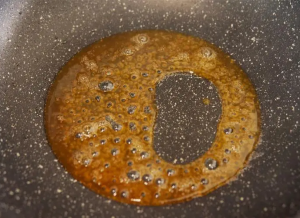
3.Quickly pour the hot caramel into pudding molds or other heat-resistant containers to ensure that the caramel doesn’t solidify outside the container but evenly coats the inner walls. This step needs to be done quickly and carefully to avoid burns or creating a mess. Once the caramel is poured into the container, swiftly rotate the mold to evenly spread the caramel on the inner walls. This step is crucial as an even caramel coating gives the pudding or other food an appealing and tempting appearance. Before proceeding with these steps, preheat the oven to 180 degrees Celsius. This ensures the proper temperature during the cooking process, ensuring that the food is evenly heated for ideal texture and taste.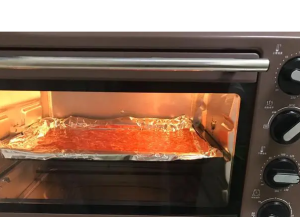
4.The first step in preparing the pudding mixture is to crack eggs into a large bowl. Eggs provide structure and viscosity to the pudding, giving it a soft texture. Next, we need to add milk and a suitable amount of sugar. Milk serves as the main liquid component, making the pudding mixture full-bodied and smooth. Sugar provides sweetness to the pudding, but adjust the amount according to personal preference. If you like a vanilla flavor in your pudding, you can choose to add a small amount of vanilla extract. Vanilla extract is concentrated liquid extracted from vanilla plants, providing a charming aroma and flavor. When making the pudding mixture, add the vanilla extract to the milk and stir well with a fork or whisk to ensure even distribution of the vanilla flavor. By properly combining these ingredients and stirring them thoroughly, you will achieve a smooth and sweet pudding mixture.
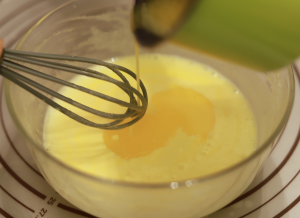
5.Slowly pour the pudding mixture into the caramel-coated molds is the next key step. Before pouring, be careful not to fill the liquid to the brim but leave some space. There are two main considerations for doing this. First, the pudding mixture will expand and set during baking, so there needs to be enough space to prevent overflow. Second, leaving appropriate space ensures that heat can be evenly distributed to the center of the pudding mixture, allowing the entire pudding to cook and set evenly. Therefore, when pouring the pudding mixture, maintain a slow and steady tilting angle to prevent liquid from splattering or pouring in too much. You can use a funnel or ladle to control the flow rate and ensure even filling of the molds with the pudding mixture. By carefully handling this step and leaving enough space when pouring the pudding mixture into the caramel-coated molds, you will achieve perfect pudding results.
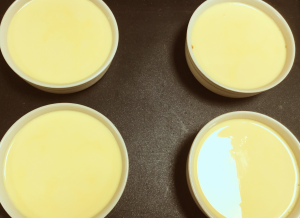
6.Place the pudding molds on a baking tray and pour in enough warm water to reach about halfway up the sides of the molds. This helps maintain moisture during baking and prevents the surface of the pudding from cracking. The baking time is generally around 30-40 minutes, but adjust it based on your oven’s performance and personal preference.
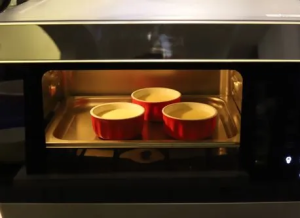
7.Once baked, remove the pudding molds and let them cool at room temperature for some time. This step is crucial as the cooling process helps the pudding fully set and maintain its shape. After the pudding has completely cooled, you can invert the caramel pudding onto a plate. Gently place the plate on top of the pudding mold and quickly yet carefully flip it over. If all goes well, the caramel pudding will release from the mold, with the caramel layer on the bottom becoming the decorative top. To enhance the visual appeal and taste, you can decorate the pudding with some fruits or sprinkle some desiccated coconut on top according to personal preference.
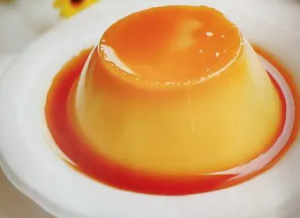
Tips:
1.When making caramel, it is important to be patient and cautious. Ensure that the sugar is heated at a moderate temperature and avoid overheating, which can make the sugar bitter or burnt. At the same time, use a wet pastry brush to gently brush any sugar crystals off the edges of the mold to prevent crystallization.
2.Before pouring the pudding mixture, strain it through a funnel to ensure a smoother texture in the final pudding. Additionally, use a ladle to scoop the liquid and slowly tilt it when pouring into the molds to avoid creating bubbles or splashing.
Caramel pudding, a creative and delightful dessert that combines caramel and pudding, is worth the effort despite its somewhat complex preparation process. Every bite of caramel pudding exudes a rich taste of creamy milk and sweet caramel, captivating the senses. In this fast-paced world, caramel pudding brings a sense of relaxation and leisure, allowing you to rediscover the beauty of life.
